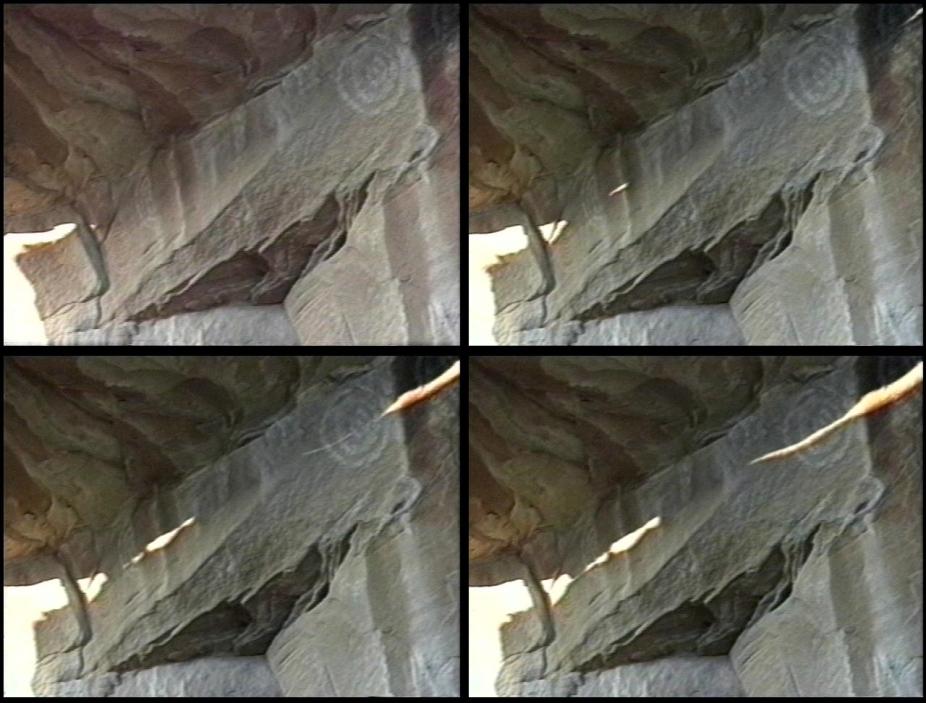Solstice Marker
On summer solstice, the petroglyph panel of the previous slide takes part in a striking play of light. About 45 minutes after sunrise, a thick pointed shaft of light appears to the left of the petroglyphs, and gradually moves rightward, cutting across the top part of the leftmost spiral (top left image on the photograph).

Path of summer solstice light on three petroglyphs.
A second knife-like light spot appears to the right of the second spiral, and stretches horizontally in both directions, nearly bisecting the spiral (top right). Meanwhile a third, thin shaft of light has begun to form to the right of the Sun-symbol at the other end of the panel (bottom left). It grows leftward into a thin "light serpent" that cleanly bisects the Sun-symbol and continues to stretch leftward (bottom right) until it touches and merges with the left light shafts. At this point the three petroglyphs are linked by a long shaft of light along the whole length of the boulder. This sequence of events unfolds in a little under ten minutes.
The Holly House "light serpent" certainly offers a visually striking confirmation of summer solstice. Of course, other light configurations can be seen shortly after sunrise at other times of the year. Light is first seen in the tunnel late in February, and the Sun-symbol is briefly illuminated around the vernal equinox, and again in various ways from mid-April to mid-May. It has been suggested that these evolving light patterns might have served to define a planting calendar. From end of May to end of July, the day-to-day vertical displacement of the rightmost light shaft with respect to the Sun symbol is certainly large enough to make anticipatory observations to predict the summer solstice.